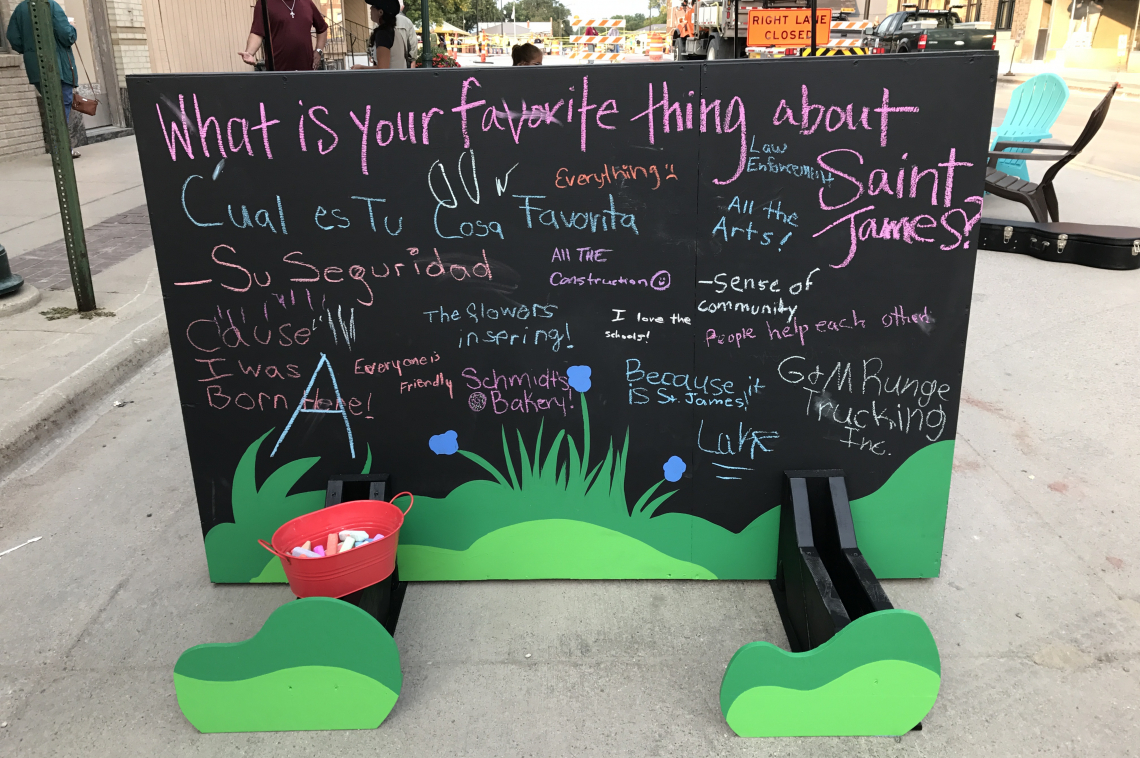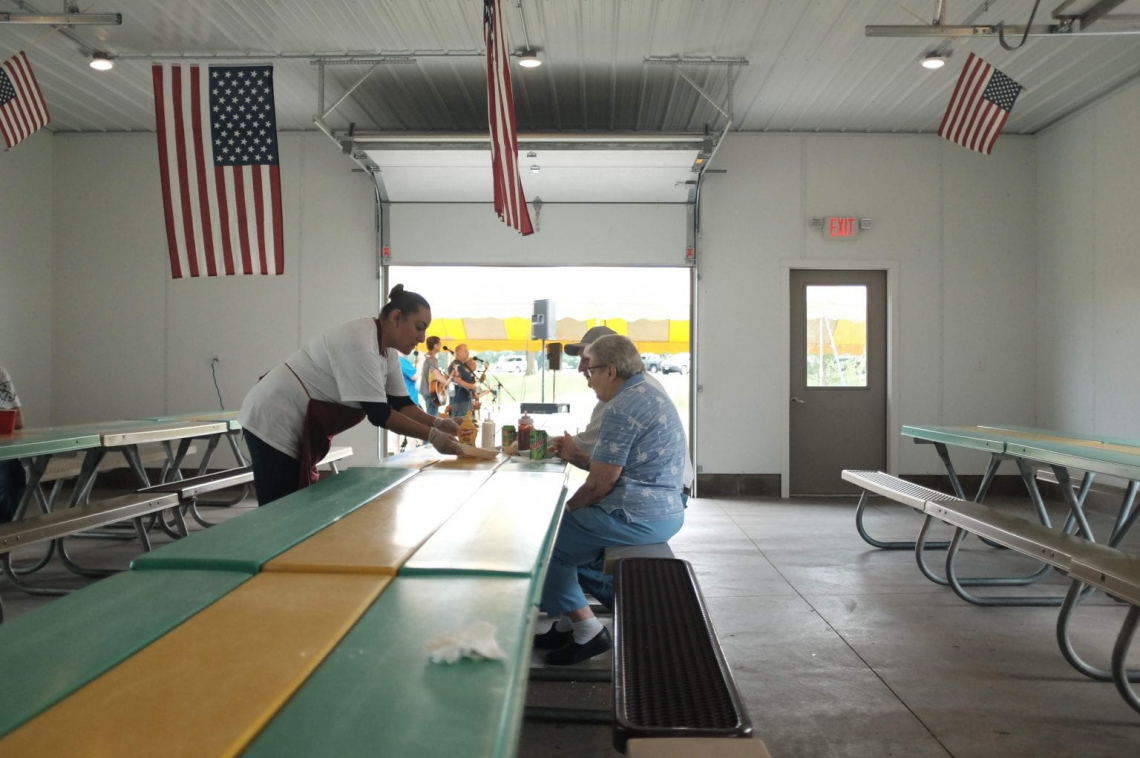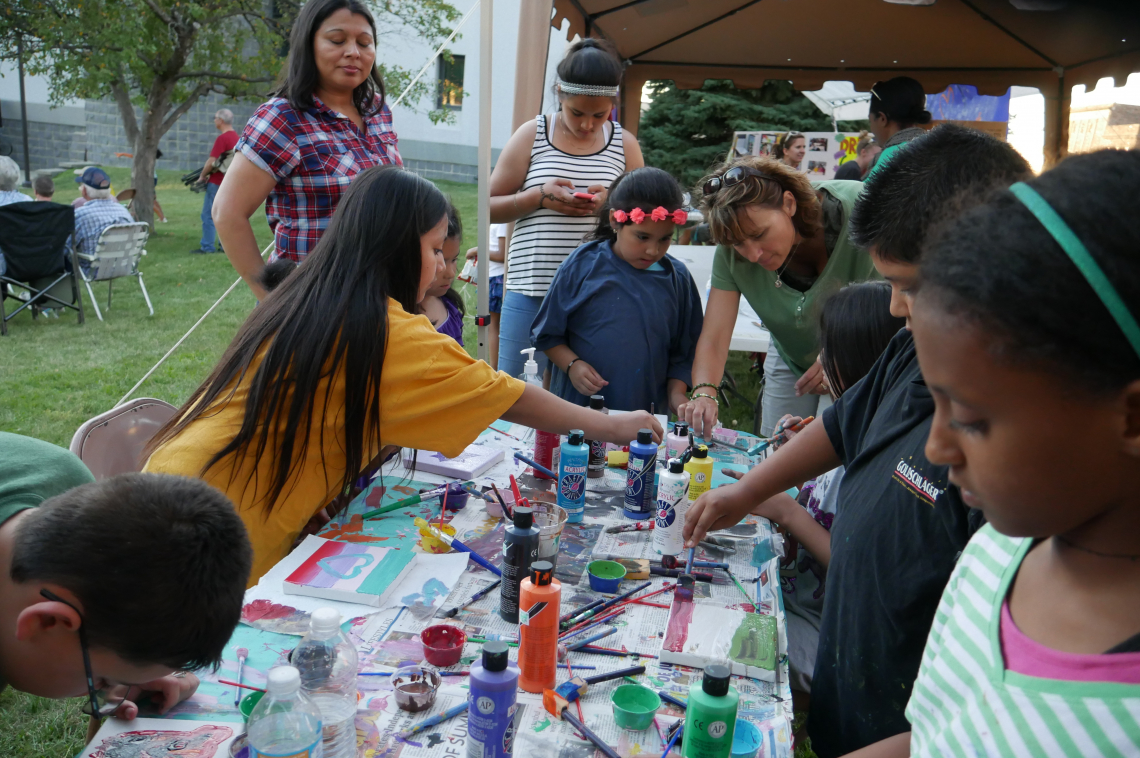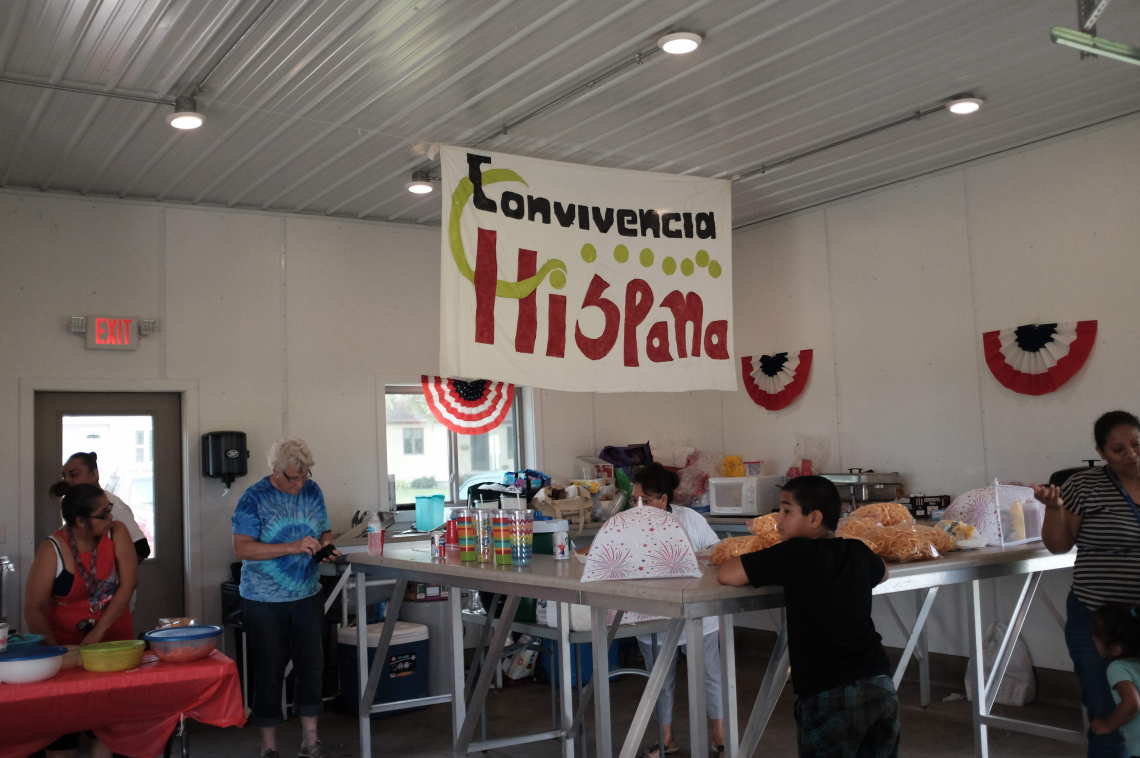



This is the first in a series of articles that follow up on three organizations Shelterforce featured in 2017—the Southwest Minnesota Housing Partnership in Slayton, Minnesota; the Cook Inlet Housing Authority in Anchorage, Alaska; and Little Tokyo Service Center in Los Angeles, California.
. . .
Three years ago, Shelterforce covered the stories of a handful of community development organizations that had begun work under multi-million dollar grants from ArtPlace. The grants gave housing and social service providers an opportunity to explore whether they could further their missions by integrating arts and culture strategies into their work. The initiative—the Community Development Investments (CDI) program—has ended, but the work hasn’t. This is the first in a series of articles that follow up on the three organizations we featured—the Southwest Minnesota Housing Partnership in Slayton, Minnesota; the Cook Inlet Housing Authority in Anchorage, Alaska; and Little Tokyo Service Center in Los Angeles, California—and asks what did they do, what did they learn, and most importantly, did they permanently change the way they operate?
ArtPlace will be sharing excerpts from each of these articles.
***
Founded in 1992 with a mission to support the economic development of communities throughout southwest and south-central Minnesota, Southwest Minnesota Housing Partnership (SWMHP). had a longstanding track record of creating affordable housing and homeownership opportunities. In the world of community development, the organization’s many accomplishments had followed what some might call a conventional path: listening sessions and surveys, city council meetings, funding applications, and endless puzzling over how—with limited resources—to build functional, well-designed homes.
Community As Collaborators, Not Consumers
SWMHP issued a call for artists—with the criterion being that applicants be based in the region and have an interest in collaborating on issues related to community development, like affordable housing, downtown revitalization, and public safety. SWMHP created a roster of creative collaborators; artists added to the roster became eligible to submit proposals for projects in the three communities.
As proposals came in, the question of what art is and what it can do—and in this case, should do—returned. Some of the proposals outlined ideas for using art as an aesthetic add-on, and reflected an understanding of public art in the most conventional sense. Ideas for a new mural to cover up an empty wall downtown or an interesting statue of a historic figure were well-intentioned, but far from what SWMHP hoped to achieve.
Graphenteen recalled a few awkward interactions with applicants who wanted to know why they couldn’t get funding to simply do what they wanted to do. Why not put a statue of Amelia Earhart in the middle of the park? She made aviation history! But the applicants knowing exactly what they wanted to do was the very reason such proposals didn’t make the cut. SWMHP was looking for ideas that began with engaging the community in deciding what to do rather than going to the community with a decision that had already been made. “They could not be at the point of ‘ready to implement,’” Graphenteen says. “The goal is to find out what your community wants to do.”
Read more about two of the projects that resulted in the full article.
Working Outside the Box
“Trust in the process” is a mantra familiar to artists of all genres, but less familiar to community development organizations with grant deadlines to meet, where “You have to justify why you would go about this process,” Arentson says.
Even for all of SWMHP’s enthusiasm around the arts and culture projects they were engaged in, their daily work around rigid guidelines and reporting structures dictated not only how they did their work, but how they communicated with each other. And having two offices, one in Slayton and the other 100 miles away in Mankato, only hampered the flow of communication.
In February 2018, Ashley Hanson joined SWMHP on a five-month contract as artist-in-residence and established three strategies for relationship-building within the organization. She started, as she had in Milan, with story circles. Hanson gathered together groups of seven staff members at a time for creative activities—like making sculptures from pipe cleaners and playing cards— designed to tease out some of the internal challenges the organization faced. “You start to get a sense of where people are stressed and anxious,” Arentson recalls. In an organization dedicated to providing affordable housing, it was easy to focus on problems without taking time out to celebrate successes. What could be done to champion the success stories? How could the organization do a better job managing workload and capacity? How could staff, whose work is so much about helping others, be encouraged to take better care of themselves?
Working off the story circles, Hanson next created Off the Clock, a podcast series featuring one-on-one personal interviews with SWMHP staff. Hanson set up two guidelines for the interviews: 1. “Meet me somewhere that makes you happy” and 2. “We can talk about anything except work.” She met staff in living rooms, at church, in ice cream shops, and on shooting ranges, and listened to them share personal memories about going to school, traveling abroad, falling in love, raising families. There was even an award for staff members who listened to all 22 episodes. The podcast served the dual purpose of allowing Hanson to get to know SWMHP better while giving the staff a chance to get to know one another better.
While most staff at SWMHP embraced the integration of arts and culture into their housing development work, there were some who didn’t fully understand what such a strategy entailed. Few doubted that a colorful mural qualified as a work of art, but a potluck? Did a potluck count as “art?” “There was a lot of conversation about our work, and how we frame it as ‘art work,’ and that being different from expectations of [SWMHP],” Mary Welcome says.
Divergent definitions of what art is and isn’t resulted in tensions Hanson said she addressed by offering SWMHP more exposure to diverse forms of artistic practice. She tapped her artist network from across Minnesota—theater practitioners, photographers, storytellers, printmakers—and invited 10 of them for half-day workshops with SWMHP staff to grow SWMHP’s roster of artist consultants and foster familiarity with diverse artistic practices.
After the Grant
A lot has changed at SWMHP since it first became a CDI grantee. CEO Rick Goodemann, who had championed Partnership Art from its inception, passed away suddenly in February 2019, leaving shock and uncertainty in his place. Chad Adams, Goodemann’s successor, is keen to pick up where the grant left off. No one at SWMHP wanted the effort to be a one-off; the changes in how staff interacted with one another and the approaches to problem-solving Hanson had introduced were far too valuable. A search for a new artist-in-residence began in spring 2019.
The impact on SWMHP was profound. Graphenteen watched SWMHP transform its approach to community development from “something we do” to “who we are.” “Now we consider ourselves working with the community when we do housing development,” Graphenteen says. “It was a transforming moment for the organization when they really sat down and reflected on the first three years.”
This article originally appeared in Shelterforce magazine. Sign up here to receive Shelterforce Weekly in your inbox.





